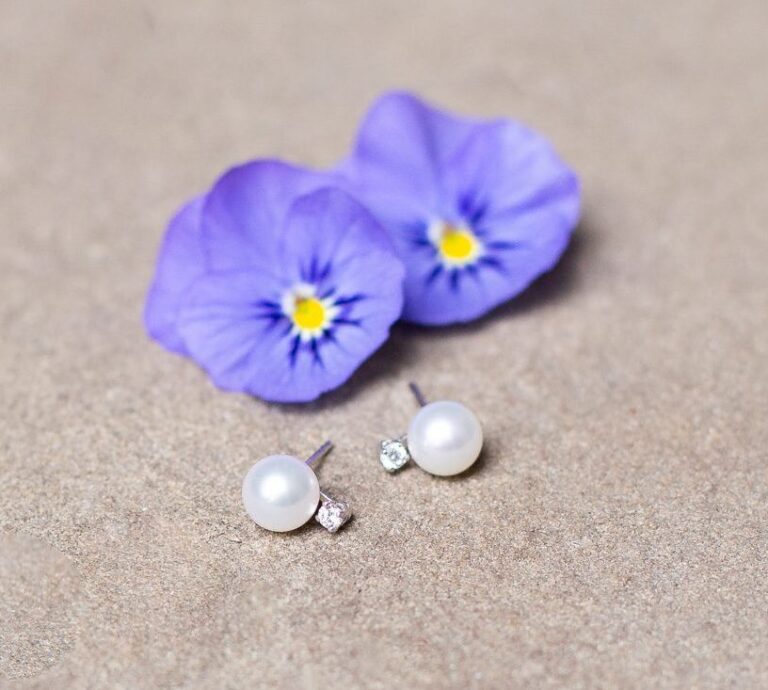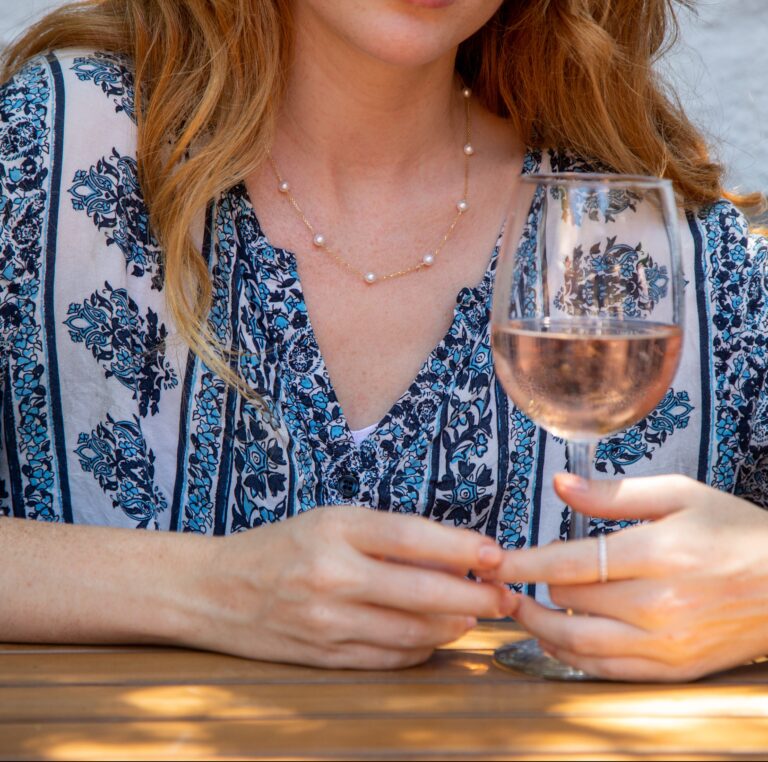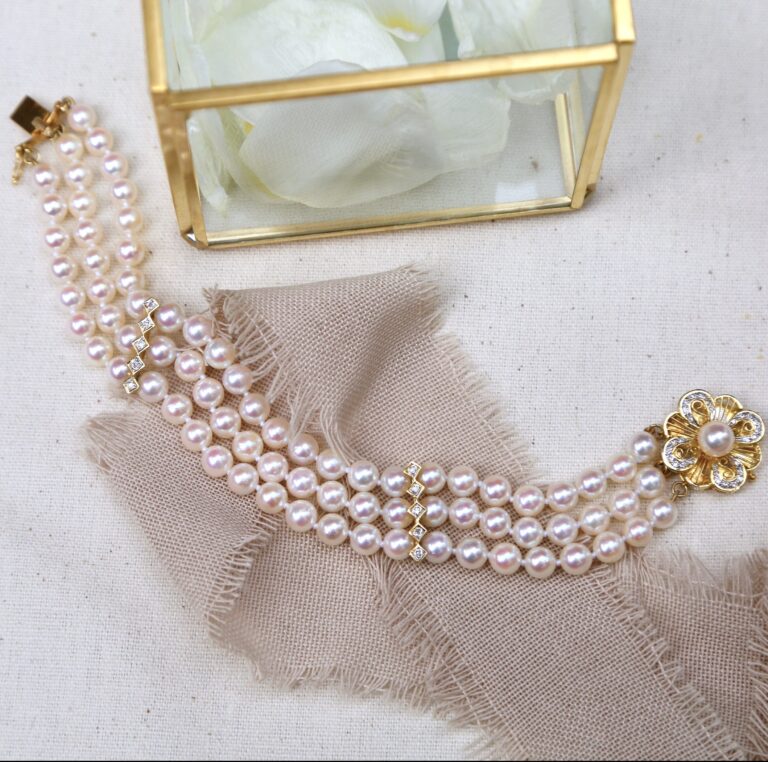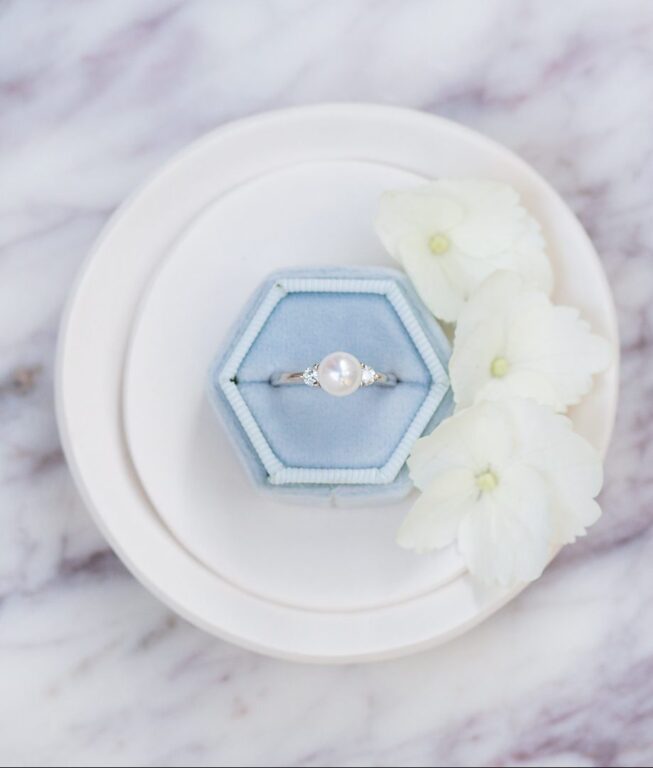Timeless Pearls

Acquiring their beauty over time, pearls are considered the ocean’s gemstone. They’ve been celebrated as far back as 2200 BC, and have seen a resurgence in recent years, in part due to our first female Vice President, Kamala Harris. Since pearls never really go out of style, we pulled together a few details you should know before buying your next pearl piece.
Types
Much like snowflakes or fingerprints, no two pearls are exactly alike. Bumps, blemishes, and minuscule flaws are all part of the gem’s beauty. There are two main types of pearls: natural and cultured. Natural pearls grow in wild mollusks. Cultured pearls are grown in mollusks under human supervision, they’re more common, and are found in four forms:
• Akoya. Often thought of as the classic pearl. Grown in Japan and China, these are highly sought after due to their luster and somewhat pinkish color.
• South Sea. Grown in Australia, Indonesia and the Philippines. These pearls are grown inside gold-lipped oysters that result in white, silver or golden hue, and are larger in size.
• Tahitian. Often referred to as black pearls because of their gray color. They are cultivated primarily around the islands of French Polynesia, each featuring undertones of yellow, silver, blue and pink.
• Freshwater. The most common pearls found in jewelry. Formed in fresh lakes, rivers and ponds in China, these are typically white but can come in a wide variety of sizes and colors.
Colors
Pearls receive the color from the mollusk’s interior shell lining, so the gems aren’t only found in white and cream. Instead, colors range from black to white and everything in between, but the most popular colors include gold, black, blue and lavender.
Pearl essentials
In the 1930s, Coco Chanel first popularized pearls as everyday jewels. She knew that pearls had the versatility to empower women, famously saying “a woman needs ropes and ropes of pearls.” From politicians and Hollywood starlets, to influencers and royalty, pearls have long been a symbol of elegance and good taste. Here are a few classic pearls that you can wear or give today.

Pearl studs. Need we say more? These earrings are always appropriate. A perfect gift for those born in June, regardless of age.

What’s more beautiful than pearls on a delicate chain? Perfection day or night. Often given on a romantic occasion like Valentine’s Day or anniversaries.

A string of pearls is elegance personified. A traditional gift commemorating a wedding, graduation, or any life milestone.

You might even want to consider an engagement ring that comes from the sea, rather than the earth. Pearl engagement rings aren’t common, but they are beautiful. There are even a few celebrities who sport pearl engagement rings like Emma Stone and Michelle Williams.
How to Choose
Every woman should have a pearl in her collection. When buying a new piece, keep in mind the quality of a pearl is dependent on its source. Following are a few pointers to begin your search, and stop into E.B. Horn for even more insight.
• Similar to other gemstones, start by examining the size. The larger the pearl, the higher in quality.
•Look at the surface; a pearl with minimum bumps or scratches is worth more than those with imperfections.
•Most pearls aren’t perfectly round, but the closer they are, the more valuable.
Ensure your pearls last a lifetime
Pearls should be the last thing you put on and the first thing you take off. Ranking 2.5 on the Mohs Hardness Scale, meaning the gem is very soft and easily scratched or abraded. However, with reasonable care, pearls can be a long-lasting treasure. As such, we put together a few pointers.
Chemicals aren’t friendly to pearls. After every use, we recommend wiping the jewelry with a soft cloth or, if needed, a damp cloth.
•Avoid submerging pearls in water. Partially swimming in a chlorine pool or washing dishes with soapy water. Chemicals may penetrate the surface of a pearl and discolor your gems to varying shades of yellow and grey.
We recommend dedicating a spot in your jewelry box or in a cloth bag to store your gems.
•Pearls need moisture to keep their form. So don’t store jewelry in an airtight container.
•Avoid hanging necklaces on a hook, as this will put a strain on the silk and could stretch out the jewelry.
Real vs Fake
Since pearls are a staple in almost every woman’s wardrobe, there are many imposters out there. If you are interested in buying pearl jewelry, it’s important to know if a pearl is authentic or not. Here are six tips to tell the difference between fake and real pearls.
1.The tooth test: a quick and common trick to find out the pearl’s true state. Simply gently rub the gem onto your tooth. Since the surface of real pearls is made out of nacre, the pearl should have a grainy feel to it.
2. Size and symmetry: Fake pearls will all look exactly the same whereas real pearls will have slight variations in size and symmetry. High-quality pearls only have slight imperfections.
3. Shine: The shine of a pearl is what makes it so unique. Real pearls glisten when exposed to light.
4. Weight: Fake pearls are typically light, so you should feel this when holding in your hand.
5. Temperature: A real pearl should feel cool at first touch, then slowly warm up until you hold it in your hand.
6. Drill hole: If a pearl is real, there should be a ring around the drill hole.
Looking to learn more about pearls or our selections? Please email info@ebhorn.com or call 617-542-3902 during store hours to make an appointment.
About E.B. Horn
No matter the piece or purpose, we want to make your jewelry shopping experience the best it can be. That’s the attitude that we’ve had for over 185 years and we’re happy to see it’s worked all this time. Visit our site to learn more.
Stay in touch
You May Also Like
Want to receive occasional offers and updates from E.B. Horn via email?